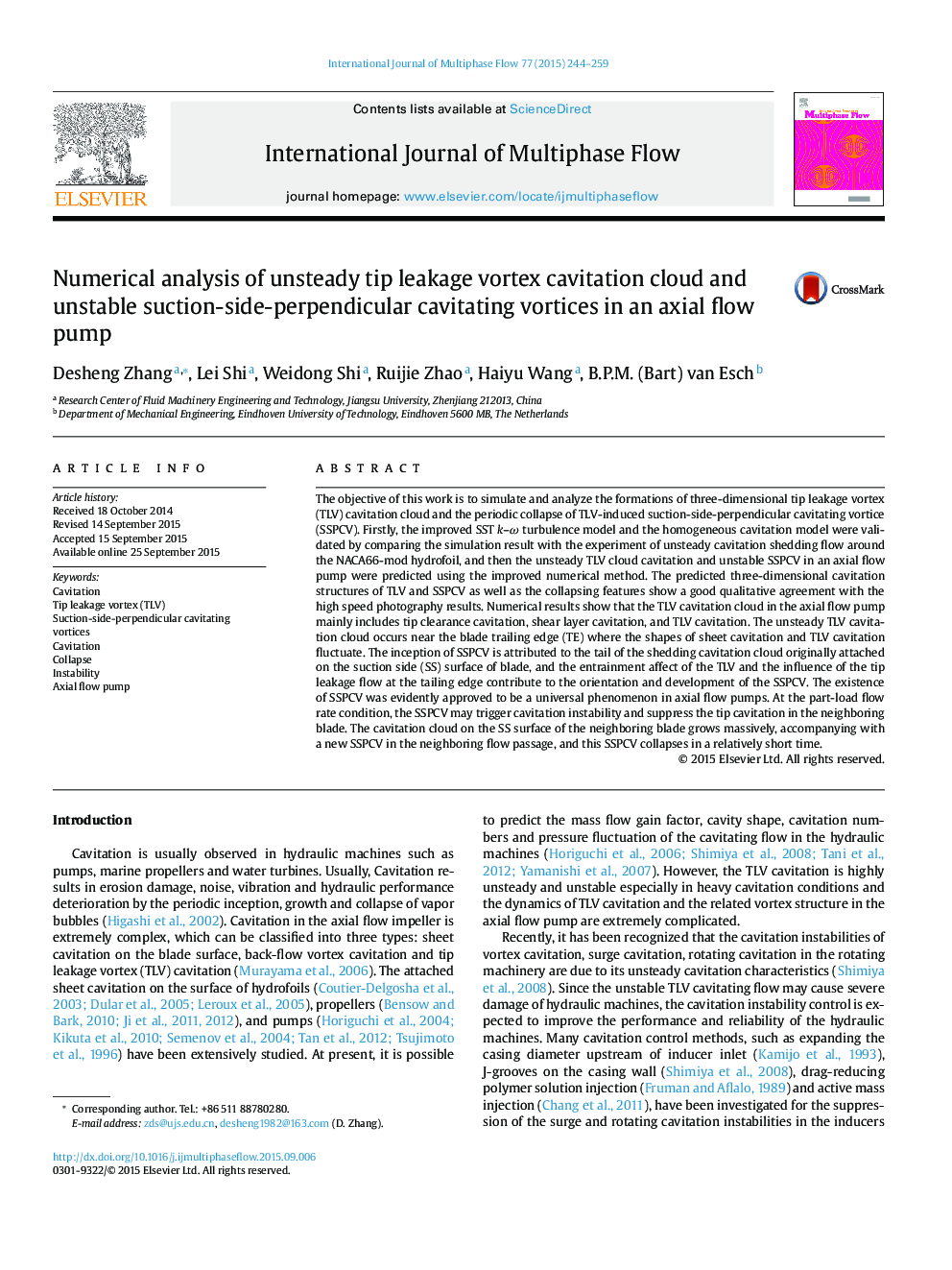| کد مقاله | کد نشریه | سال انتشار | مقاله انگلیسی | نسخه تمام متن |
|---|---|---|---|---|
| 667588 | 1458501 | 2015 | 16 صفحه PDF | دانلود رایگان |
عنوان انگلیسی مقاله ISI
Numerical analysis of unsteady tip leakage vortex cavitation cloud and unstable suction-side-perpendicular cavitating vortices in an axial flow pump
ترجمه فارسی عنوان
تجزیه و تحلیل عددی نشت نشتی ابر حفره و ناپایداری ویروسهای حفره ای ساطع شده در عمق یک پمپ جریان محوری
دانلود مقاله + سفارش ترجمه
دانلود مقاله ISI انگلیسی
رایگان برای ایرانیان
کلمات کلیدی
موضوعات مرتبط
مهندسی و علوم پایه
مهندسی شیمی
جریان سیال و فرایندهای انتقال
چکیده انگلیسی
The objective of this work is to simulate and analyze the formations of three-dimensional tip leakage vortex (TLV) cavitation cloud and the periodic collapse of TLV-induced suction-side-perpendicular cavitating vortice (SSPCV). Firstly, the improved SST k-Ï turbulence model and the homogeneous cavitation model were validated by comparing the simulation result with the experiment of unsteady cavitation shedding flow around the NACA66-mod hydrofoil, and then the unsteady TLV cloud cavitation and unstable SSPCV in an axial flow pump were predicted using the improved numerical method. The predicted three-dimensional cavitation structures of TLV and SSPCV as well as the collapsing features show a good qualitative agreement with the high speed photography results. Numerical results show that the TLV cavitation cloud in the axial flow pump mainly includes tip clearance cavitation, shear layer cavitation, and TLV cavitation. The unsteady TLV cavitation cloud occurs near the blade trailing edge (TE) where the shapes of sheet cavitation and TLV cavitation fluctuate. The inception of SSPCV is attributed to the tail of the shedding cavitation cloud originally attached on the suction side (SS) surface of blade, and the entrainment affect of the TLV and the influence of the tip leakage flow at the tailing edge contribute to the orientation and development of the SSPCV. The existence of SSPCV was evidently approved to be a universal phenomenon in axial flow pumps. At the part-load flow rate condition, the SSPCV may trigger cavitation instability and suppress the tip cavitation in the neighboring blade. The cavitation cloud on the SS surface of the neighboring blade grows massively, accompanying with a new SSPCV in the neighboring flow passage, and this SSPCV collapses in a relatively short time.
ناشر
Database: Elsevier - ScienceDirect (ساینس دایرکت)
Journal: International Journal of Multiphase Flow - Volume 77, December 2015, Pages 244-259
Journal: International Journal of Multiphase Flow - Volume 77, December 2015, Pages 244-259
نویسندگان
Desheng Zhang, Lei Shi, Weidong Shi, Ruijie Zhao, Haiyu Wang, B.P.M. (Bart) van Esch,
